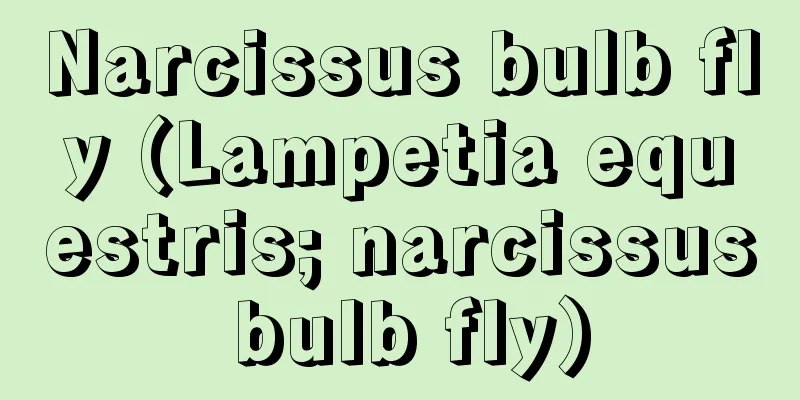Blue

|
[1] [noun] ① the name of a color. One of the five colors. One of the seven colors. One of the three primary colors. Originally, it was a broad color name indicating the range between black and white, mainly referring to blue, green, and indigo, but sometimes also to black and white. ※Todaiji Temple Sutra Early Heian Period (c. 830) “ Ao Tama Aka Tama o ba ” ② The lush appearance of plant leaves. ※Wee (1924)〈Hosoda Genkichi〉 “The garden was filled with a vivid blue, befitting the end of May. ” ③ The color of a horse’s coat being bluish black. Also, that horse. Blue-haired. A blue-haired horse. 〔Nippo Jisho (1603-04)〕 ④ A blue book. Refers to kusazoshi and the like. ※Kibyoshin Tamama Aotosen (1790), preface: "Have you finished the blue seed book?" ⑤ Aosen. Refers to Kan'ei-sen. ※Kabuki Yoshisama Sanyuen Onshin (Kobori Seidan) (1869), Act 5: "I'd be happy to receive either Bunkyu-sen or Ao- sen." ⑥ A Noroma puppet, a puppet used for a major role. It has a flat head and a blue face, and is used by the main puppeteer in the troupe. Yoroku. ※Kakuhon Hasshonin (1820-49) , 4: "A little extra charm, for example , even a Noroma puppet employed in an Edo -bushi performance would not be blue." ⑦ A type of eel. Refers to one with a slightly bluish spine. ※Sakehon Tsugen Sori (1787) 1 "Blue, white, and striped are the names of eels. It is also the word for eel-eel eating." ⑧ Karuta term. (a) Of the 48 Tensho Garuta cards, this refers to 12 hau (club) cards. It is so named because the club in the picture is colored blue. Blue cards. ※Joruri Daishokan (around 1711) Doyuki "The fire is stoked , and even though the additional number is seen, there is no blue, and no one knows when it will be raised, in the reading of the Hirayomi" (b) Abbreviation of "aotan (short blue)." ※Hanamanouugu (1887-88)〈Suehiro Tetsucho〉Vol. 1: “Playing karuta on the second floor at the back of the Sanjukken moat 〈abbreviation〉 I shouted out loud, thinking, ‘What, I got that blue light?’” ⑨ Abbreviation of “ao shingo (green light)” and “ao densha (blue train).” ※Nami (1928)〈Yuzo Yamamoto〉Wife: “Is it still red? I thought that if I was lucky, the blue light would come.”[2] [Prefix] ① Indicates that a fruit, etc., is not fully ripe. “Blue gourd” “Blue ground cherries” etc. ② Indicates that someone is young and not fully grown, or that their personality, skills, etc. are immature. “Green talent” “ Blue samurai ” etc. [Etymology](1) Along with red, black, and white, it is a basic color term in Japanese and has been used as a color name since ancient times. The hues that Ao represents are broad, including blue, green, purple, and even black, white, and gray. In particular, there are many overlapping parts with Midori, and in the "Kanchiin Honmyōgishō" (Kanchiin Honmyōgishō), the readings for "Ao, Midori, Midori" can be seen as "Aoshi" and "Midori." (2) As a color name, "ao" came to mean the color blue more narrowly as "midori" (which also early on had the meaning of a youthful state) became established as the color name for green, but it continues to be used for colors other than blue as well. Ao Iaoi [Blue]Ao Mua O Mu [Blue]Shii [Blue]Sei [Blue]Ao Shiashi [Blue]Source: The Selected Edition of the Japanese Language Dictionary About the Selected Edition of the Japanese Language Dictionary Information |
|
[1] 〘名〙① 色の名。五色の一つ。七色の一つ。三原色の一つ。本来は、黒と白との中間の範囲を示す広い色名で、主に青、緑、藍をさし、時には、黒、白をもさした。※東大寺諷誦文平安初期点(830頃)「青(アヲ)珠赤(あかたま)をば」② 植物の葉の青々とした様子。※Wee(1924)〈細田源吉〉「五月の末らしく鮮(あざや)かな青が、庭園中を充(み)たしきって」③ 馬の毛色が青みがかった黒色であること。また、その馬。青毛。青毛の馬。〔日葡辞書(1603‐04)〕④ 青本のこと。草双紙の類をさす。※黄表紙・玉磨青砥銭(1790)序「青(アヲ)のたね本は出来ましたか」⑤ 青銭のこと。寛永銭をさす。※歌舞伎・吉様参由縁音信(小堀政談)(1869)五幕「文久銭(ぶんきう)か青銭(アオ)位はくれてもいいに」⑥ 野呂松(のろま)人形の中で、主要な役に使われる人形。頭は平らで、顔の色が青く、一座の中の主要な人形遣いがつかう。よろく。※滑稽本・八笑人(1820‐49)四「チョイとおまけの御愛敬、縦(たと)はば江戸節の会へ雇(やとは)れし能呂間人形(のろまにんぎょう)、それさへ青はつかはねば」⑦ うなぎの一形態。背色の少し青みがかったものをいう。※洒落本・通言総籬(1787)一「あを、白、すじみなうなぎの名なり。うなぎくひのつう言也」⑧ カルタ用語。(イ) 天正ガルタ四八枚のうち、ハウ(棍棒)の札一二枚をいう。その図の棍棒に青色の彩色が施してあることからいう。青札。※浄瑠璃・大職冠(1711頃)道行「火をくはっくはっとかきたて、加番見れども青もなくあがりもしらぬひらよみに」(ロ) 「あおたん(青短)」の略。※花間鶯(1887‐88)〈末広鉄腸〉上「三十間堀辺の奥二階にての骨牌(かるた)遊び〈略〉『なんだ其の青を占めたか』と思はず高声になれば」⑨ 「あおしんごう(青信号)」「あおでんしゃ(青電車)」などの略。※波(1928)〈山本有三〉妻「まだ赤か、うまく行けば青が来るだらうと思って」[2] 〘接頭〙① 木の実などが、十分に熟していないことを表わす。「青びょうたん」「青ほおずき」など。② 年が若く十分に成長していないこと、人柄、技能などが未熟であることを表わす。「青二才」「青侍(あおざむらい)」など。[語誌](1)アカ・クロ・シロと並び、日本語の基本的な色彩語であり、上代から色名として用いられた。アヲの示す色相は広く、青・緑・紫、さらに黒・白・灰色も含んだ。特にミドリとは重なる部分が多く、「観智院本名義抄」の「碧・緑・翠」には「アヲシ」「ミドリ」などの訓が見える。 (2)色名としてのアヲは、ミドリ(これも若やいだ状態を表わす意が早い)が緑色(グリーン)の色名として定着するにつれ、狭く青色(ブルー)を示すようになるが、なお、ブルー以外の色にも使われ続けている。 あお・い あをい【青】あお・む あをむ【青】しい【青】せい【青】あお・し あをし【青】出典 精選版 日本国語大辞典精選版 日本国語大辞典について 情報 |
>>: Chlorous acid - aensosan (English spelling) chlorous acid
Recommend
Solti, Sir Georg
Born: October 21, 1912, Budapest, Hungary [Died] S...
Isshiki
The former name of a town (Isshiki-cho) in Hazu-g...
Nanshu painting
This is one of two major classifications of Chine...
Layout of the temple
A method for arranging the main buildings in a te...
Hozukyo Gorge
The gorge of the Hozu River that flows through the...
Dorsal respiratory group
…A large number of respiratory neurons are distri...
Agadir Incident - Agadir Incident
On July 1, 1911, Germany sent warships to the por...
Diphylleia sinensis (English spelling) Diphylleia sinensis
… [Susumu Terabayashi]. … *Some of the terms that...
Square chisel - Kaku no miban
…His greatest achievement was to introduce the pr...
Comparative advantage
Why do countries trade? Why does one country expor...
Cave kiln
A kiln constructed by digging a hole into the grou...
Camellia rusticana (English spelling)
…[Yoshiharu Iijima]. … *Some of the terminology t...
Molecular crystal
They are also called molecular crystals. They are...
Illyria - Iryurioi
…the indigenous people of the western Balkan Peni...
Teachers' Communist Incident
These were cases in which teachers were arrested ...









